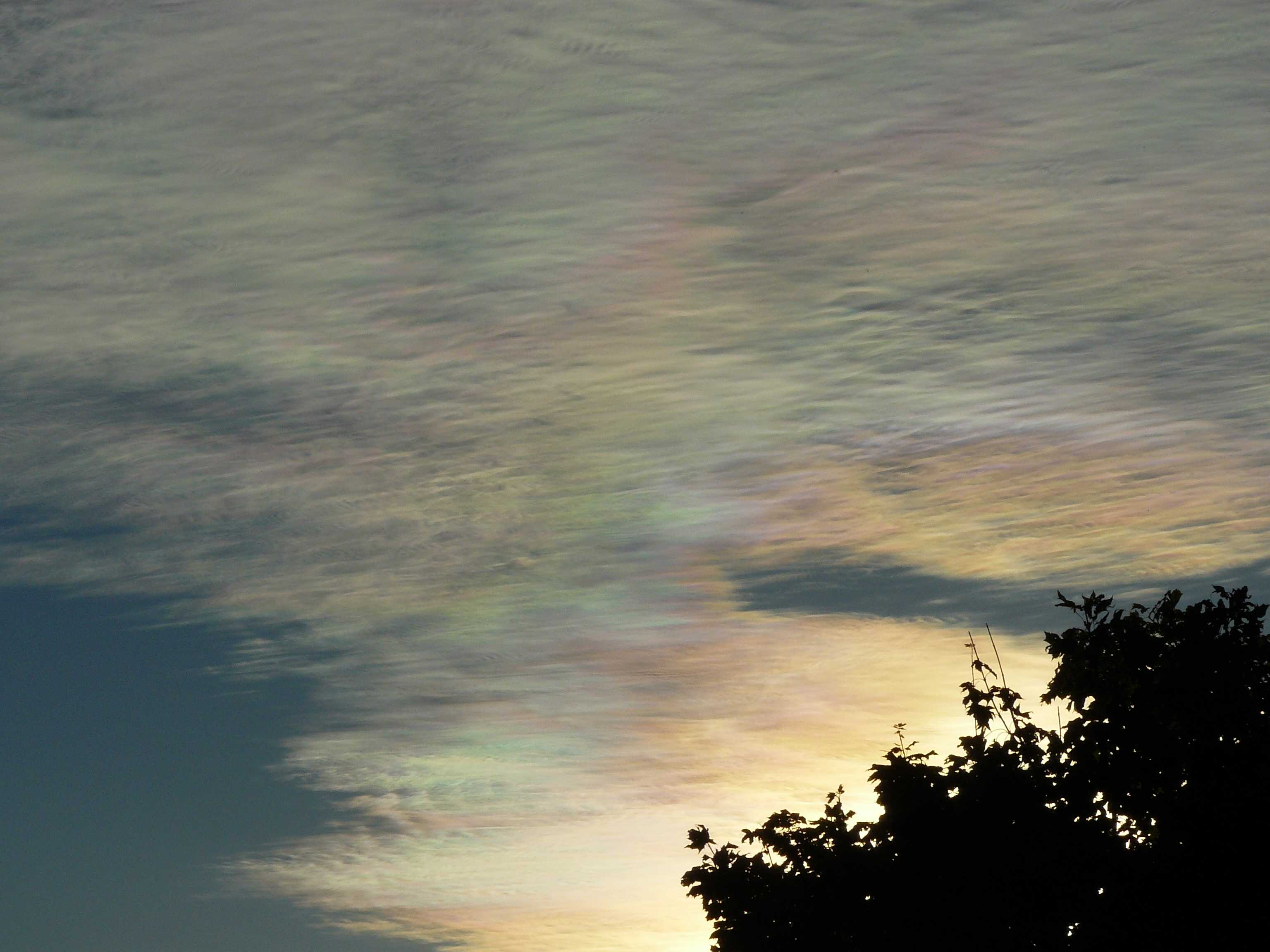© Jarmo Koistinen
Kamppi, Helsinki, Finland
Latitude: 60° 10' 7'' N
Longitude: 24° 56' 7'' E
30 September 2015 1809 (Local Time)
Camera direction: towards SW
Image P/S code: S.2.14.1
Image I.D.: 5105
CL = 0, CM = 0, CH = 9
-
Cirrocumulus stratiformis with irisation
The main feature of this zoomed-in photograph is the area of irisation with pastel shaded colours. This colouration indicates the presence of small, uniformly sized, supercooled water droplets that can occur in Cirrocumulus cloud. It also helps the fine elements within the Cirrocumulus stratiformis cloud stand out.
Links in the image description will highlight features on the image. Mouse over the features for more detail.
© Jarmo KoistinenKamppi, Helsinki, FinlandLatitude: 60° 10' 7'' NLongitude: 24° 56' 7'' E30 September 2015 1809 (Local Time)Camera direction: towards SWCL = 0, CM = 0, CH = 9Image P/S code: S.2.14.1Image I.D.: 5105Cirrocumulus lenticularis
Cirrocumulus species lenticularis, which appears in patches shaped like lenses or almonds. They are often very elongated and usually have well-defined outlines. The patches are mostly smooth and are very white throughout. This image overall shows distinct undulations, making it the variety undulatus. It also shows some small transverse ripples seen at times in Cirrocumulus cloud.
Links in the image description will highlight features on the image. Mouse over the features for more detail.
© PascualSerra, Valencia, SpainLatitude: 39° 40' 55'' NLongitude: 0° 27' 35'' W18 March 2015 1506 (Local Time)Camera direction: towards NCL = 0, CM = 0, CH = 9Image P/S code: P.2.2Image I.D.: 4809
Irisation/iridescence
Iridescent colours cover a large part of this cloud layer. This is known as irisation.
The cloud is identified as a very high Altocumulus, almost bordering on Cirrocumulus. As the layer is relatively extensive, it is of the species stratiformis. It is also thin and translucent (variety translucidus) and there are undulations (variety undulatus).
Irisation results from the interaction of sunlight with small, uniformly sized cloud particles. Within about 10° from the Sun, diffraction is the main cause of irisation. Beyond about 10°, the interference of light waves is usually the predominant factor.
The colours green and pink tend to predominate, although other colours are seen, such as blue. They are often delicate, pastel shades, but can be brilliant.
Links in the image description will highlight features on the image. Mouse over the features for more detail.
© Claudia HinzBrannenburg, GermanyLatitude: 47° 44' 20'' NLongitude: 12° 5' 18'' E31 December 2005 1439 (Local Time)Camera direction: towards SWCL = 0, CM = 3, CH = 0Image P/S code: P.13.3Image I.D.: 5624

